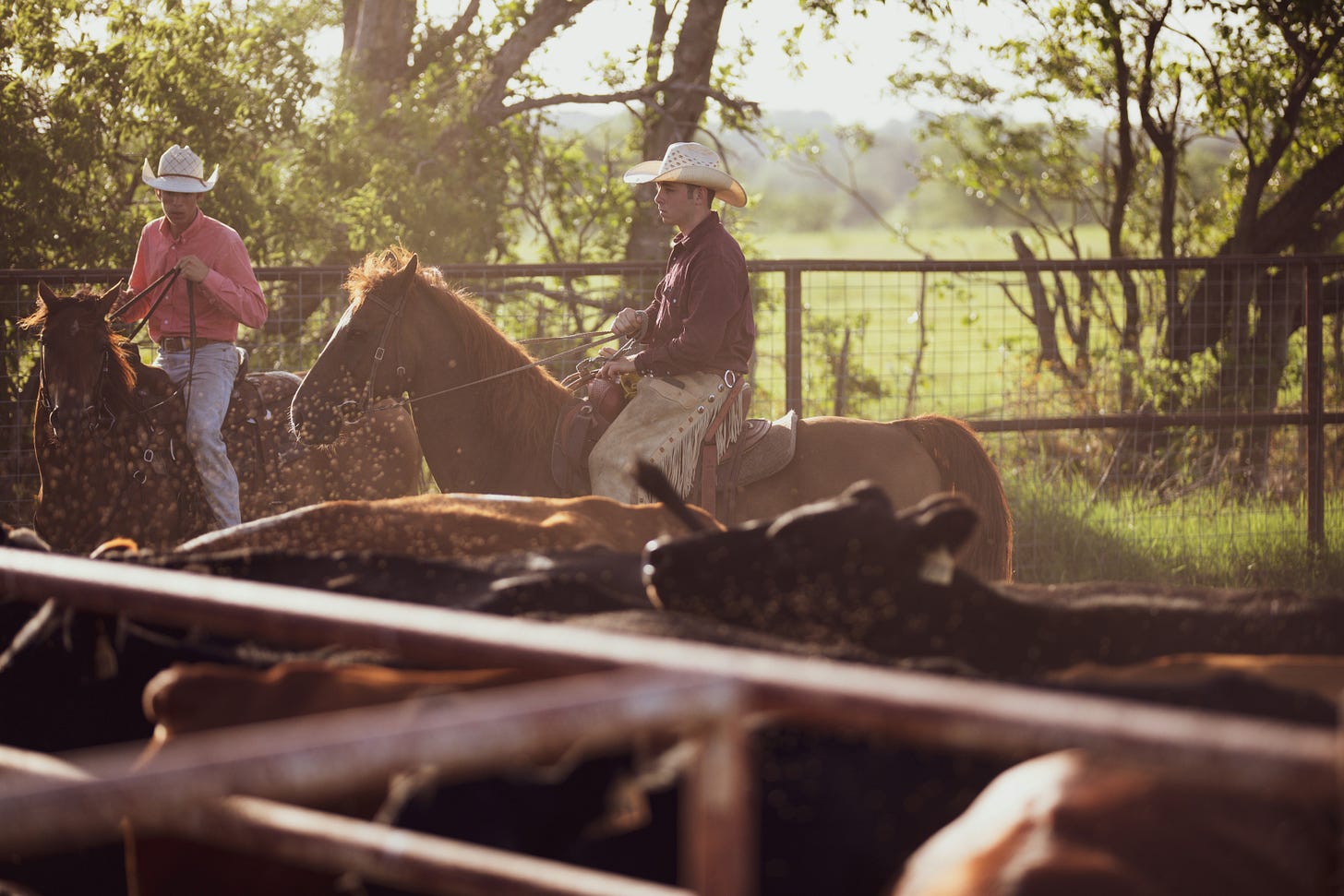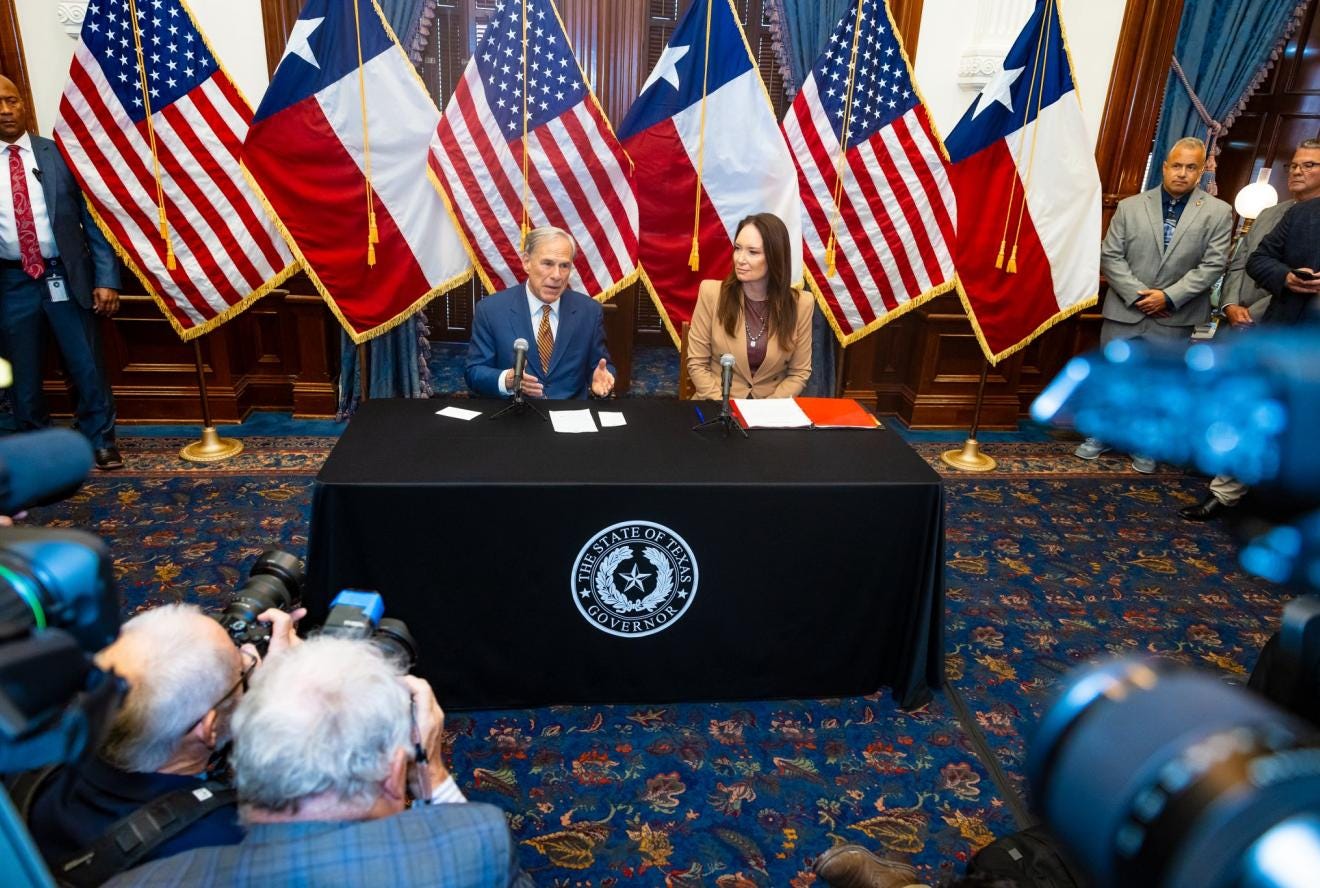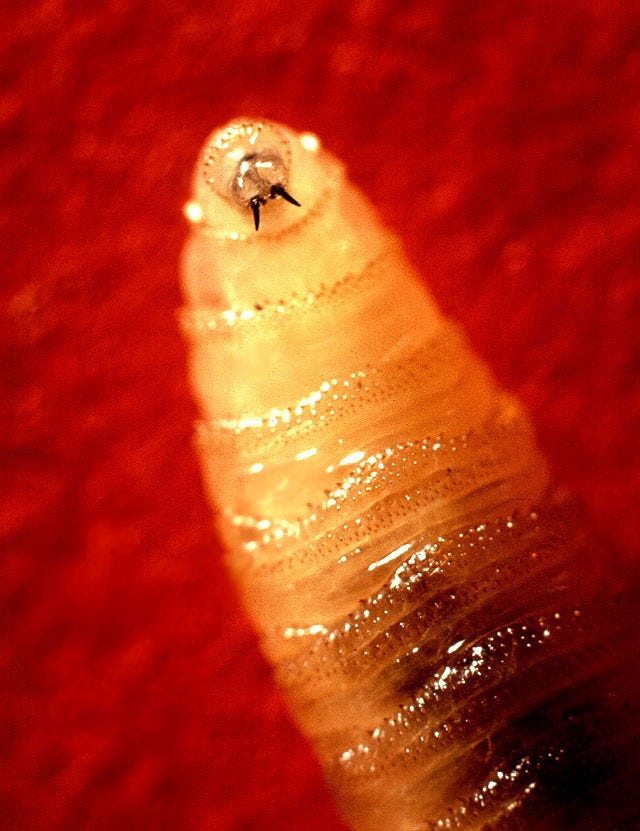Ranchers applaud USDA fight against New World Screwworm, debate future trade with Mexico
As the cattle industry praises a major rollout of actions on NWS, insiders are split over when cattle trade with Mexico should resume.

Ranchers and cattle industry insiders are praising the Trump administration’s efforts to stop a New World Screwworm (NWS) outbreak that began in Central America under the previous administration, but the industry remains divided over when trade with Mexico should resume.
“It wasn’t the Trump team that dropped the ball,” says Shad Sullivan, a cattle rancher and property rights chair for R-CALF USA who co-hosts the popular industry podcast Lonesome Report. “But here we are.”
Since eradicating NWS—a contagious, flesh-eating parasite that can be fatal to humans and animals—in North America in the 1970s by releasing millions of sterile flies, the Department of Agriculture (USDA) has worked closely with Mexico to keep the threat south of Panama. In 2022, under the Biden administration, NWS cases began to creep north.
In August, a Maryland resident was treated for NWS after returning from El Salvador, raising concern in the cattle industry. Similar cases, each involving patients who contracted the parasite while traveling in South America, occurred in 2024, 2023, and 2014.
“The concern of NWS coming across the border is still very real, but I find it unlikely that livestock will be the problem,” says a California veterinarian. She asked to remain anonymous. “Last time it came across the border, it was on a dog. I think people, pets, and wildlife pose a much larger risk.”
Rollins announces aggressive NWS plan
Since her confirmation as Secretary of Agriculture in February, Brooke Rollins has worked with Mexico to tackle NWS. After briefly reopening trade, Rollins again shut the southern border to live animal imports in July when NWS was found within 370 miles.
In August, the USDA announced aggressive new prevention measures. Dr. Bart Fischer, a professor at Texas A&M and co-director of the university’s Agricultural and Food Policy Center who served on the USDA transition team, compares the approach to Rollins’ effective handling of avian influenza earlier in the year.
“The day she announced her avian influenza strategy was February 26; the high-water mark on wholesale egg prices was February 26,” Fischer says. “The market responded immediately. While this situation is different, she’s bringing the same level of focus and resolve to protecting the U.S. cattle herd from New World Screwworm.”
Among the USDA’s actions: a new $750 million sterile fly facility in Texas, “tick riders” patrolling the border on horseback, trained detector dogs, and new staff hires, as well as $100 million in research, traps, therapeutics, and other preparedness tools. Rollins says the border will remain closed to live animal imports until Mexico can demonstrate the threat has moved south toward Panama.
“The industry’s number one ask has been a new sterile fly production facility, and they just got the commitment to build it,” says Fischer, himself a Texas cow-calf producer. “I’m sure no one in the government right now wanted to spend $750 million to breed flies, but Rollins announced the plan within a month of this latest case being announced.”

The new facility will release 300 million sterile flies per week. Insiders say reestablishing a buffer zone in Mexico is critical as the protocol for livestock crossing is already rigorous. The best protection is attacking the threat.
“Livestock inspection at the border is very extensive,” says the California veterinarian. “Both Mexican and American agencies perform incredibly thorough individual animal inspection, so they get looked at twice. There is actually a really good process in place that will catch any NWS lesions or larvae. This system has been in place for years with the goal of preventing tick movement across the border. If a single tick is found on a single animal, the whole shipment gets held and quarantined. Cattle are also still all dipped for ticks before they come across the border.”
Leaked emails raise questions about CDC
On August 20, emails from Beef Alliance, an organization that represents large corporate cattle feeders, alerted about two dozen industry figures of the human case in Maryland days before the public learned of it. This led to social media posts accusing the government of favoritism and strategic leaking, highlighting fissures between cow-calf producers and larger, more powerful sectors such as meatpacking and feedlots.
Tri-State Livestock News reports the USDA was not involved in relaying news or updates about the Maryland case as human infections fall “outside the realm of USDA,” according to New Mexico State Veterinarian Samantha Holick.
“This would be outside of USDA’s lane, so they aren’t going to comment on CDC activities,” Dr. Ethan Andress, state veterinarian for North Dakota, told TSLN. “That’s standard protocol. They wouldn’t step out in front. I’m not sure why it was held so close to the chest, I assume there were concerns about markets and creating fear in the market.”
In their emails, Beef Alliance tells recipients the CDC followed protocol, alerting state veterinarians and “Beltway agriculture stakeholders” about the case and stating that it had been isolated, treated, and presented no additional risk to livestock. The CDC handled human NWS cases in recent years similarly. No news sources—including cattle industry publications—appear to have reported on these cases.
This controversy comes amid leadership turmoil at the CDC. Last Wednesday, the Trump administration fired CDC Director Susan Monarez. Reports say Monarez was not aligned with the president’s agenda, clashing with Health and Human Services (HHS) chief Robert F. Kennedy Jr. over issues such as vaccine policy, weaponization of public health, and misinformation.
At least four top CDC officials have since resigned.

Calls for MCOOL renewed
For American cow-calf producers, the trade shutdown presents a welcome opportunity.
“If you can get the big meatpackers to pay more for your calves, that makes a big difference,” says Joshua Cox, a rancher in Wyoming. “And with Texas not being able to feed all these calves coming out of Mexico, I think that's a major reason why the cattle market has gone up. We just constantly have that lead weight of Mexican cattle fed in Texas sitting on the market all the time.”
R-CALF USA, which exclusively represents domestic cattle and sheep producers, has advocated to keep the border closed. Sullivan says that over the last five years, South American countries, Mexico, and the USDA dropped the ball on NWS mitigation, leaving domestic producers vulnerable and forcing the current Trump team to cover lost ground.
“I hope Rollins and her USDA are taking all the right steps to address the situation now,” he says. “We must protect our national herd first, that’s the America First policy that Trump promised and won on. The border should remain closed at all costs, until our fly production facilities are running at full capacity and Mexico engages in a truthful and transparent trading partnership.”
More than one million cattle cross the border from Mexico into the U.S. every year. Colin Woodall, CEO of the National Cattlemen’s Beef Association (NCBA), believes it is time to reopen the border. NCBA represents diverse industries in the cattle market, including Texas feeders who purchase, feed, and sell lean Mexican cattle.
“If there is science behind the action, then, you know, look, that is one thing,” Woodall told the Oklahoma Farm Report. “If it’s political only, we have to keep in mind that that only gets you so far.”
As Mexican cattle await entry along the southern border, Sullivan says it’s time for mandatory country of origin labeling (MCOOL), legislation that would benefit American producers by requiring retailers to mark where beef sold in the U.S. originated.
“After all, if it weren’t for the U.S. leading the charge in NWS mitigation and financing, the American beef industry would be in peril,” he says. “Mexico and other South American countries have benefited from our lead in the NWS eradication program by flooding the U.S. market with unregulated and inferior cattle, yet have enjoyed the fruits of the American market. If ever there were a time to implement MCOOL and let the consumer choose, it would be now.”
Ag policy in the age of MAHA
The “Make American Healthy Again” movement that helped propel Trump to the presidency remains a force in his administration, with many key figures close to him—led by Kennedy—pushing for food system reform.
While agriculture grapples with these new ideas, the USDA oversees the industry in its current form: a complex, integrated system responsible for the significant feat of feeding hundreds of millions of Americans every day. Rollins leads the USDA at a crucial moment. As competing forces, both political and corporate, push for their individual interests, she must find a way to allow the system to evolve, without letting it break.
“The current debate about New World Screwworm is really a conversation about trade,” says Fischer. “We have an integrated system that involves Mexico and has for decades, and we want to be able to export to other countries which is a huge demand source.”
He argues that trade isn’t just good for cattle industry power players, it’s important for small producers too. Cattle prices remain at record highs, and the global demand for U.S. beef is an important factor.
“We have a very integrated supply chain from cow-calf producers to feeders to packers to retailers,” he says. “Most of the industry wants trade because when times are tough producers want to export. They want the market to work because it benefits all of us.”
Fischer points out that about 30% of overall farm income in the U.S. is attributable to exports. In his current trade deals, Trump is making a point to prioritize beef.
“Jeopardizing exports is not ‘America first,’ because we rely on exports of our products including beef,” Fischer says. “More demand sources for beef is good for ranchers. I think trade deals are hugely important. Everywhere Trump goes, beef is on the list of things included in these trade talks.”
As a cow-calf producer himself, Fischer sympathizes.
“I get it, American beef is better. But this is a huge, integrated system. We can’t ban imports and prioritize exports. It’s a two-way street.”



Hi, I just discovered your newsletter on Chris Bray’s substack. I am interested in the health of the beef industry, as my family enjoys it regularly.
I have increasingly been hearing about the stranglehold a handful of slaughterhouses have on the industry (is it just beef or all meat?), importantly, about how they are squeezing small cattle producers.
Do you think the years of allowing an influx of cheaper Mexican cattle has led to these corporations being able to accumulate so much power, via having a large supply to their demand?
Do you think that restricting that flow will benefit the industry as a whole, by creating a more equitable balance between those who raise the cattle and those who process it?
Another question I have is whether you think antitrust laws already on the books can or should be utilized to break up what appears to be an industry cartel, for the benefit of ranchers and consumers.
My understanding is that Obama, despite his claims of being immersed in constitutional law, and thus allowing us to think he was dedicated to upholding the Constitution, was anything but, as he either let enforcement of antitrust laws lapse or refused to enforce them entirely. I don’t know specifically which.
I am unaware of Biden’s track record on that, but given the further consolidation of wealth under his regime in the hands of a few conglomerates and billionaires, I would guess he was ineffective on that front as well.
As Trump has been utilizing more than one de facto defunct law to restore order at the border and elsewhere, I was wondering if his administration seemed open to that course and if so, would it also legally apply to this situation?